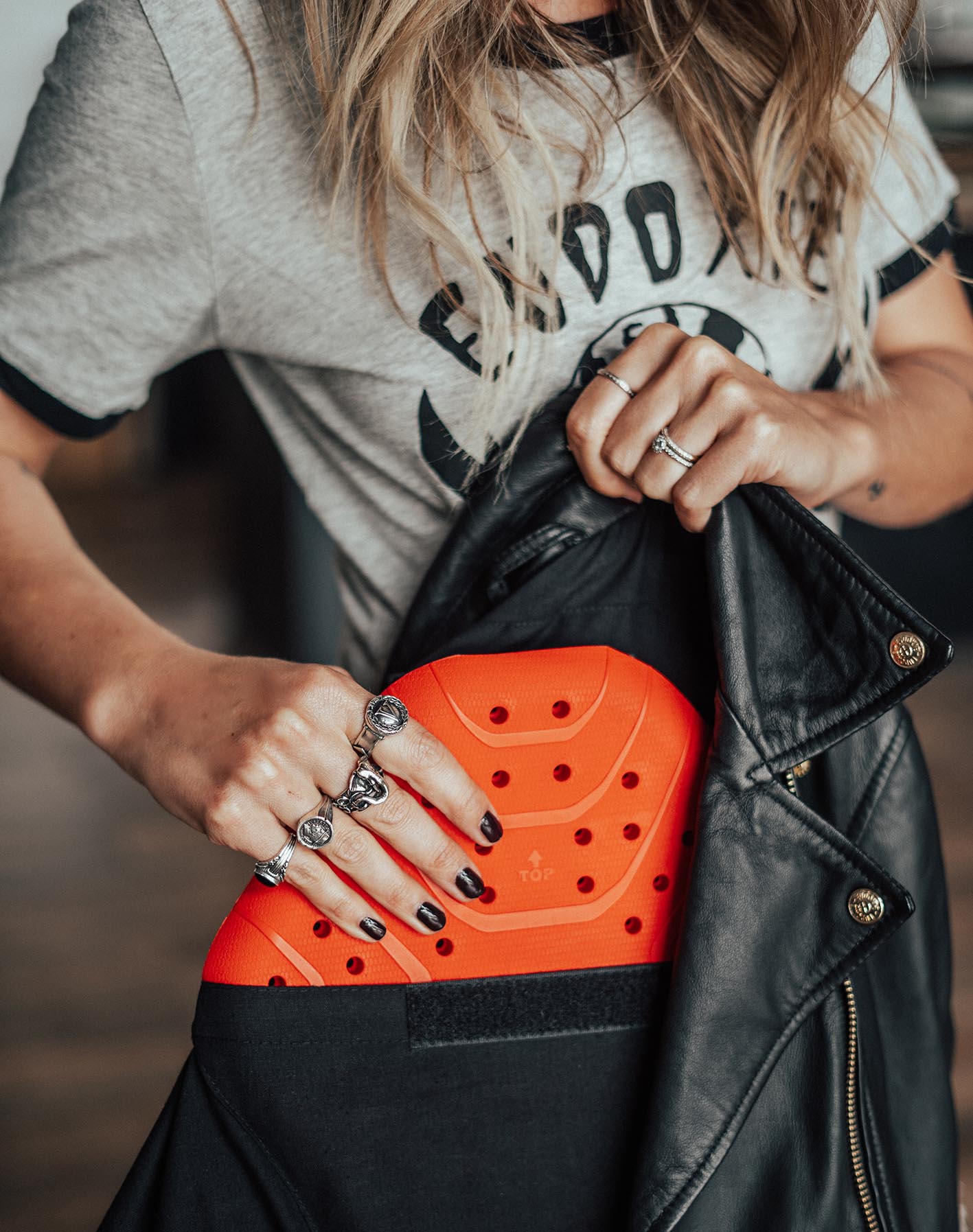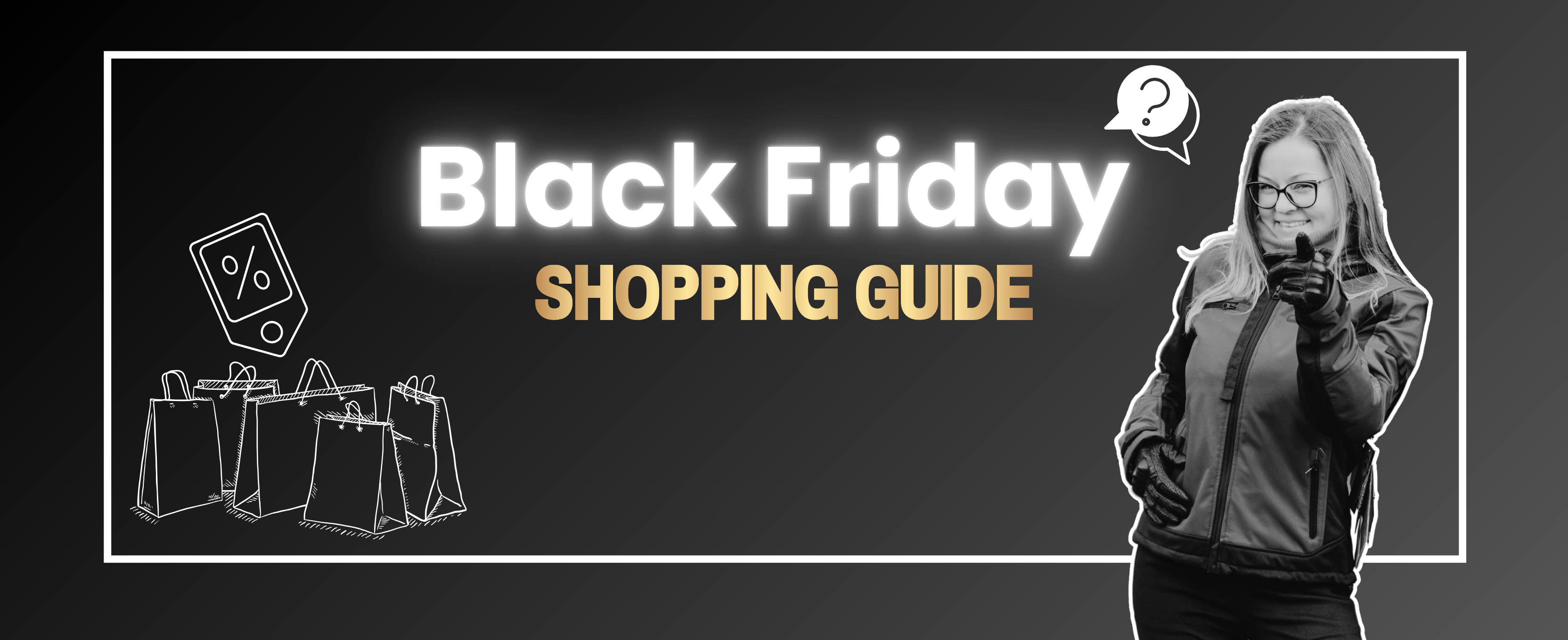There are mainly three types of people when it comes to MC clothing:
- people who do not wear protective gear at all (please, don’t fall into this category 😉)
- people who wear a full set of proper MC protective gear (Let’s all be those folks 🙋♀️!)
- People, who wear protective MC gear, but take out the impact protectors 🤷♀️
Even though the latter is better than the first one, there are many reasons why you should not take impact protectors out of your motorcycle jackets, shirts, or trousers.
The garment itself can have abrasion resistance qualities and in case of accident might prevent you from losing your skin, but it is unlikely to protect you from any serious injuries caused by impact. That is what body armor or protectors are for. Their task is to reduce the force that will hit various parts of your body in the unfortunate situation and so prevent or reduce the injury.
Today the body armor has been developed so well, that you do not necessarily need to wear bulky, stiff protectors. Instead, you have a possibility to get thinner, almost invisible inserts (e.g. these TripleFlex protectors from SAS TECH) that will protect you on the road.

So here are the most important things to know about the impact protectors.
The impact protectors, or in other words - body armor - that is used in motorcycle clothes must be tested to EN 1621 CE standard. Different test standard verifications apply to various protectors:
EN 1621-1: for shoulder (S), elbow (E), hip (H), knee (K), and lower leg (L) protectors
EN 1621-2: for back protectors: full back including shoulder blades (FB); center back only (CB) and lower back only (LB)
EN 1621-3: for chest protectors (one-piece or divided)
EN 1621-4: for mechanically-activated air vests
EN 1621-5 for electronically-activated airbags (this standard is in development)
Impact protectors have "protectiveness classes" similar to clothes themselves (can read more about it here), but here they are called levels.
Therefore, when you shop for protectors you will come across Level1 or Level2 ratings.
The difference between the two levels is defined by the amount of force the protectors transmit from an impact. Or in other words - the amount of force the protector can absorb to itself and so minimize the impact on your body.
In essence, CE-Level 2 protectors can simply take more force than a Level 1 protector can, and therefore they are considered to be safer.
If you want to get a bit more technical, here are the max force that protectors are allowed to transmit (different force levels apply for back protectors and joint protectors (e.g. shoulder, elbow, hip, knee):
EN 1621-1:2012 (joint protectors):
- Level 1: residual force below 35 kN
- Level 2: residual force below 20 kN
EN 1621-2:2014 (back protectors):
- Level 1: residual force below 18 kN
- Level 2: residual force below 9 kN
When buying the protectors you will also notice some other markings on them. Next to the indication of which level the protector is, you might find some other important details, such as:
- T+ and T- markings, which indicate that the protectors have been tested at +40°C and -10°C temperatures respectively. Not all protectors get temperature tested, so this might be important if you plan, for example, using them in certain climate conditions.
- Various letters on the protector will relate to the intended use - e.g. S means shoulder, E - elbow, CB - central back, etc. These can help you indicate what kind of protector it is if you cannot recognize it from the looks only.
- ‘Type A’ or ‘Type B’ (on limb protectors) identifies the size of a protector, type B being the bigger one. Back and chest protector sizes are based on the wearer’s waist-to-shoulder length, so you will normally find the number written on it.
Generally speaking, impact protectors in motorcycle clothes should always have a pictogram of the person on two wheels - aka motorcycle - that indicates this is an impact protector for motorcycle gear. You can see examples below.


Body armor or impact protectors should always be of the right size and fit well in the clothing. If the protector is too small or too big it will likely cause you discomfort while wearing, but most importantly won’t perform at its highest ability in case of an accident. Try to never fold, bend, roll or curve protectors, except of maybe while placing them into the clothes (you will unlikely completely prevent that). Also, remember to always remove protectors before washing motorcycle clothing, and store them in a dry ventilated place. You should never put protectors in contact with detergents, acid, oil, or other similar materials. Instead, if needed, clean protectors with a dry towel or damp cloth only. Protectors are also the product that “wears” out, therefore it is recommendable to change protectors every second year or immediately if any damage is made to it.
Impact protectors play an essential role in motorcycle clothing safety and therefore basic knowledge about the topic might help you when shopping for mc gear. I hope with this summarised information you will feel more confident and sure what to look for next time 😉



